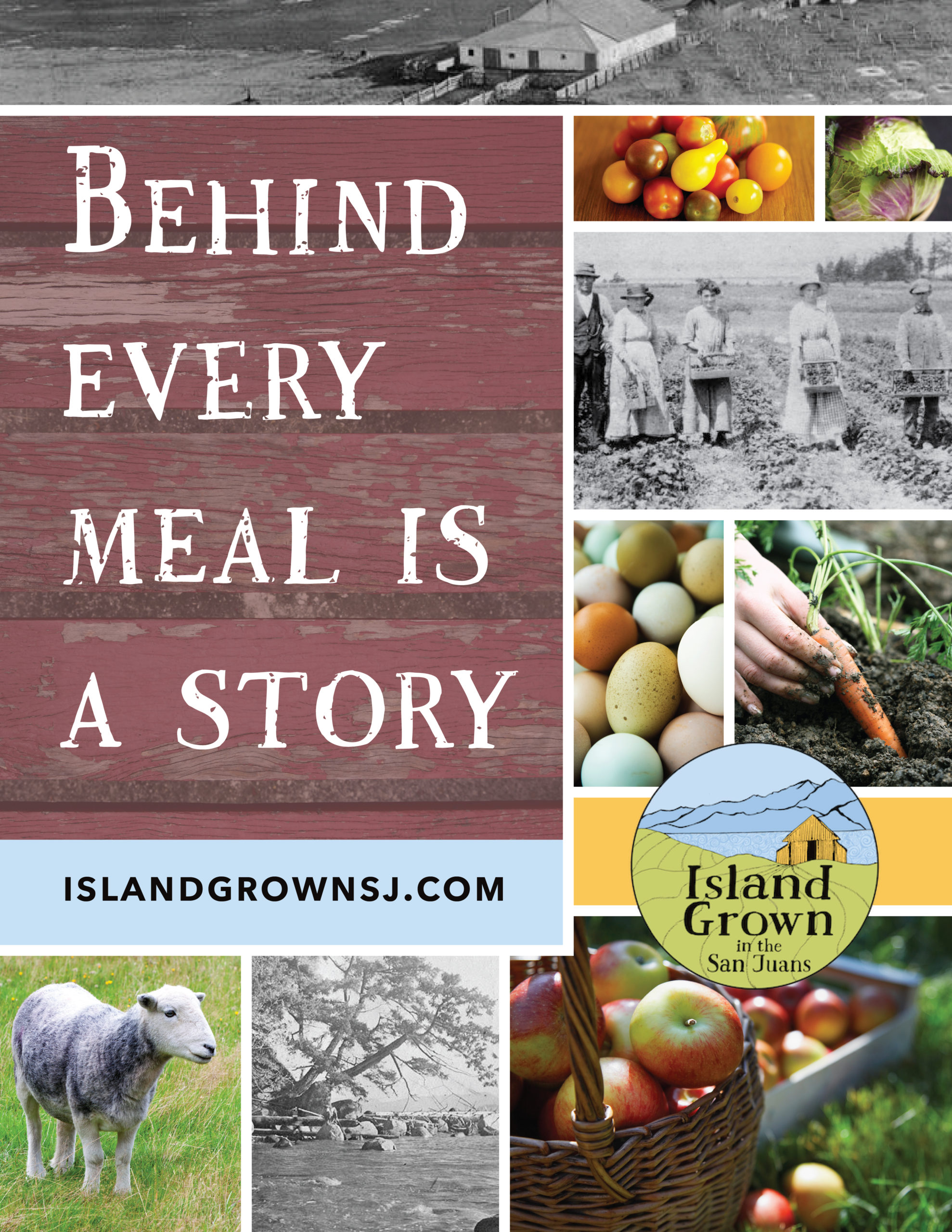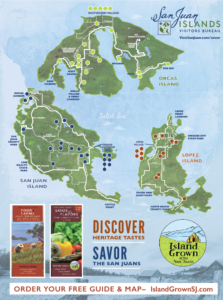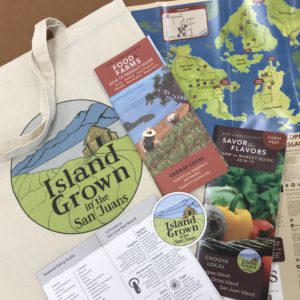Behind Every Meal is a Story

Discover Heritage Tastes of the San Juans
Eat Island Grown!

By Caitlin Leck
The unique “terroir” and “merroir” of the San Juan Islands and the Salish Sea create conditions that have offered a fragile but bountiful harvest to islanders and beyond for generations, from from camas root to cockles, from salal berries to salmon.
“Farming and fishing have been a way of life [in the islands] beginning with the Native Americans who fished and hunted here 7,000 to 9,000 years ago,” writes Iris Graville in her book, Bounty, highlighting the family farms of Lopez Island. The stories that grow along with the food that is raised and made in San Juan County are rooted in a rich history worth remembering.
In celebration of the islands’ rich agricultural history, and toward connecting consumers with the producers who offer these heritage tastes today, the Eat Island Grown campaign is a collaborative countywide initiative promoting products grown, made or gathered in San Juan County, WA.
Paired with historical vignettes are profiles of contemporary farmers; campaign materials also provide information on where to purchase high-quality island grown products that are good for our community, our lands and our local economy, and that promote a sustainable future on the islands.

“According to records from the Lopez Island Historical Society and Museum,” Graville writes, “Europeans arrived in the mid-1800s. Some early farmers were the sons and daughters of Irish farmers who fled the potato famine of the 1840s. Prospectors followed during the short-lived Fraser River Gold Rush, passing through the San Juan Islands on their way to and from unproductive goldfields.”
New settlers had to maneuver around what the Coast Salish already knew – that at mean high tide, the San Juan County archipelago is made up of over four hundred islands and rocks. Now, the majority of citizens live on the four largest islands, Lopez, Orcas, San Juan and Shaw. This geography creates a microcosmic reality, one that is particularly apparent in the county’s food and farming community: over time, each island’s producers have arrived at products and solutions best suited to the conditions of their unique patch of earth.
“Other settlers arrived from the Midwest (principally Iowa) and Canada. They raised cattle, sheep, pigs, and chickens as well as crops of fruit, vegetables, hay and oats,” writes Graville. “Dairying was well developed, too, and by 1908, [the islands had their own creameries and were shipping thousands of pounds of butter to the mainland.] By 1930, there were [hundreds of farms in the islands], producing food for local families as well as sending cream, eggs, poultry and fruit off-island. Almost every farmer also fished, returning to farm when the salmon run was over.”

Though rich bottomland soils are much harder to come by than in neighboring Skagit County, San Juan producers engage incredible ingenuity to provide diverse offerings. The Eat Island Grown campaign will feature some of the many island grown* products as they fall within five categories: sheep, vegetables, fruit, pork and beverages. The countywide campaign will match the historical vignettes and farmer profiles with seasonal availability, beginning with sheep.
In 1859, the Hudson Bay Company established the Belle Vue Sheep Farm on land assumed to be natural grassland. Upon further investigation, we now understand that these “pastures” were in fact camas beds matrilineally maintained by the Coast Salish peoples. The Hudson Bay Company also introduced Ozette potatoes to the islands, a crop quickly adopted by Coast Salish women as an additional root crop.
While the presence of sheep has varied over the last century and a half in relation to market factors, modern island producers have continued to provide world-class lamb. As the meat processing industry consolidated in recent years, however, island farmers hoping to sell direct often did not have a USDA inspected facility available at a practical distance. In 2002, a group of enterprising Island Grown Farmers Cooperative members set out to solve this problem, establishing the first USDA-inspected Mobile Slaughter Unit in the country.
The campaign story on sheep will take a deeper dive into this fascinating history, though even from a brief synopsis the pattern is clear: the history of agriculture in the San Juan Islands reflects the complex interplay of social, geological and economic factors at local and national scales. The intrigue of the history is matched only by the distinctive flavors of these island grown products.
For more information please visit islandgrownsj.com or @islandgrownsj (FaceBook). You can also find an extensive list of island grown products in the San Juan County Food and Farm Guide (at area businesses and Chambers) and the Savor the Flavors Map (on the ferries).

* Within these categories, “island grown” is defined as: produce grown in San Juan County; livestock and meat products derived from animals that have spent at least 50% of their lives in San Juan County; products wild-harvested in San Juan County; value-added products for which at least 75% of the defining ingredient and/or labor was derived from San Juan County.
Join Island Grown today as a farmer, retailer or supporting member.
Order a free San Juan Country Farm-to-Market map and Product Guide.

